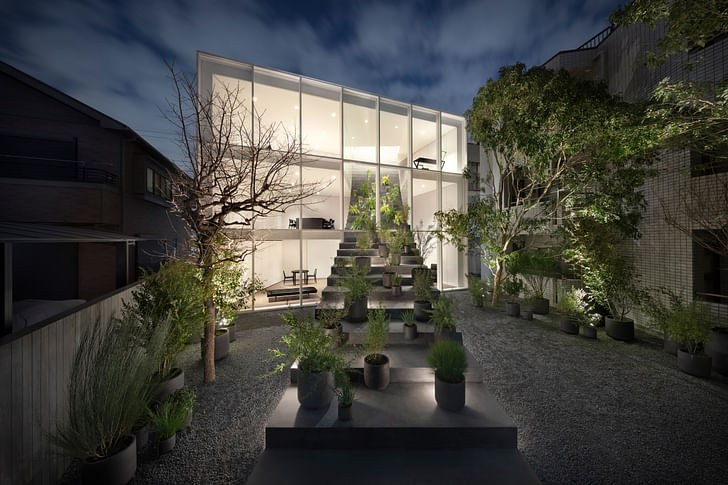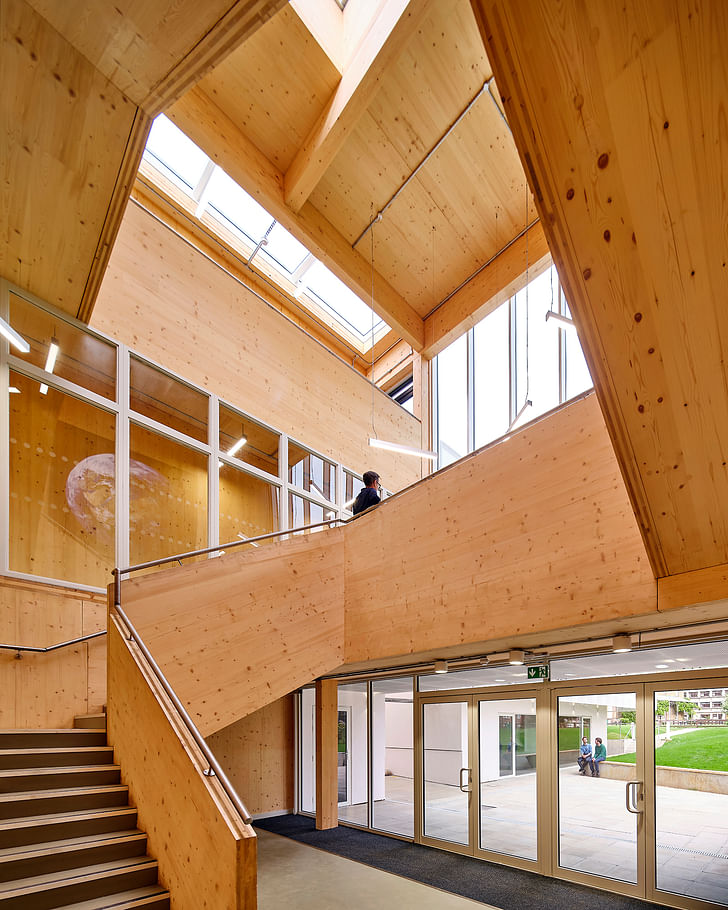

Having published work is a big part of marketing an architecture practice. The more people who are exposed to your design work, the more opportunity you'll have to promote your expertise and services. Publications like Archinect are go-to destinations for the industry and design enthusiasts.
With many millions of page views every month, Archinect receives countless project pitches from firms, individuals and PR companies. Some of those pitches are well prepared and well received, while others are poorly prepared and either ignored or forgotten. If you want your work to catch the eye of editors, heightening your chances of getting your work published, you'll want to consider these pro tips.
First and foremost, one must get into the mind of the publisher. This is crucial if you want to appeal to a publication, and more importantly, if you want to appropriately craft your pitch. If you're pitching a project to a publication with an audience that consists primarily of architects and design professionals, like Archinect, you may want to include more details and drawings than if you were pitching nice photos to a publication that caters to a more general audience. Knowing your audience will help you strategically compose your proposal and allow you to focus your time where it matters most.
Look for publications that promote the kind of work that you do. If you have a wide range of project types, some that work for one publication may not work for another. Be mindful and strategic with who you approach. This is always better than mass emails to a list of random publishers. Editors can spot this a mile away. Instead, direct your pitch to a specific person at a publication. The more personal you can be, the better your results will tend to be.

When pitching to an online publication, it's important for firms to look beyond the fact that they were the ones that completed a project and having that as the primary driver for why it should be shared with the world. Why should a publisher care about your project?
Every pitch should include a brief description describing the project and the design concept. Publications want to know about the special moments in your project, so be sure to emphasize those in your text. Unique moments should be communicated early in your pitch. The subject heading of an email is a great opportunity to call attention to the uniqueness of your project.
Keep it brief. Descriptions should be less than a page. If you can tell a compelling design story and outline the core architectural features of your project, editors will be more likely to write about it. If it's too much work to try and understand what a project is about, chances are it'll get passed over. And don't get too poetic. It isn't necessary to include three preceding adjectives on how "ethereal" your skylight is. Publications appreciate a more personal style devoid of the overuse of marketing language.

Strong visuals will get noticed. You can have the best narrative, but if the imagery isn't strong, it'll be a no go. Whether it's professional photography, renderings, or even sketches, providing quick and easy access via a shared drive link is the best approach. Tools like WeTransfer, Dropbox, Google Drive, and others are effective and easy to use. Embed the link in your pitch so that editors can quickly review it, along with one or two attached images, at a lower resolution, to give the editor something to look at before making the decision to download the press kit. Also, be sure to include all captions and credits required for publishing the images.
The organization of downloadable files is crucial here. Make sure folders are clearly separated based on media type. For example, if you have photos from multiple photographers, include a separate folder for each photographer. Perhaps you have photos, renderings, and sketches. Those should each have their own folders. The easier it is for a publisher to navigate your files, the greater the chance they will commit to your project.
Good visuals are one of the most important factors in getting work published.
Good visuals are one of the most important factors in getting work published. Editors are more likely to spend time writing about a visually striking piece of architecture because it is sure to bring traffic to their publication. As such, all photos need to be high-resolution and ready for publication with permission for use from the photographer. Another great strategy is to invite your photographer to pitch to publications as well.
Publications want to be unique and are less likely to publish work that will be seen in multiple other publications. Proposing exclusive publication rights for a limited amount of time will greatly increase your chances of getting published. You will still have the opportunity to pitch your work to other publications after the limited window passes, but offering the exclusive heightens your chances of better coverage. The editorial team will be more inclined to make the most of the opportunity you’ve presented to them. As mentioned before, it’s especially important to direct an exclusive offer to a specific person. If it seems like the offer has been extended to multiple outlets, it may be less likely to be taken seriously.
How many square feet is the project? What are the materials? Where is it located? Is construction complete? If not, when is it expected to finish? Are there any unique construction techniques used? How high is the special design moment mentioned in the narrative? All of these kinds of questions should be answered in some form in your pitch. Some firms will include a "project information" section that has things like the project team, square footage, and completion date, and others will simply include the information in their project description. It should also be made clear who is available for further information or interviews. Include names and contact information for publishers to follow up if they desire. This is the kind of information that can be included in a downloadable press kit, but may be a bit of an overload for an initial emailed proposal.
...provide quotes addressing important spatial ideas or design concepts.
Quotations from a design principal or project team member is always a great addition. Anything about the thinking behind the project or the design approach can provide an excellent addition to a project piece. Plus editors love it when they can copy and paste a solid quote to add a little length to a piece. But be careful to ensure that the quotes are meaningful and productive. Publishers know that you are happy to be a part of the project. Instead, provide quotes addressing important spatial ideas or design concepts. This is the design professional’s opportunity to speak directly to the reader about the design process.
When we receive email pitches at Archinect, those following the above parameters are considered the most carefully. When considering a project we look whether or not the project has been published elsewhere; the relevance to the current focus of our editorial attention; the relevance to our audience demographic and aesthetic preferences; quality of images; and the uniqueness of the project’s features or story. There are many other factors that go into a decision, and the details evolve on a case by case basis, but the foundational principles behind our review process look like this. We also review projects that firms upload to their Archinect firm profiles. Firms that submit notable projects are often featured on our home page.
So, when pitching to online publication, make sure to get inside the mind of the publisher; write a strong but brief narrative of your project, highlighting key architectural features; provide strong imagery with downloadable links; offer the exclusive; clearly communicate important project information; and include a few quotes from project personnel. All of this should be well organized in your email, allowing an editor to easily skim through and consider. Follow these tips and you'll be one step closer to getting more work published online!
————
If you would like to pitch a project to Archinect, feel free to email us at ed@archinect.com or submit your project from this page.
Sean Joyner is a writer and essayist based in Los Angeles. His work explores themes spanning architecture, culture, and everyday life. Sean's essays and articles have been featured in The Architect's Newspaper, ARCHITECT Magazine, Dwell Magazine, and Archinect. He also works as an ...
No Comments
Block this user
Are you sure you want to block this user and hide all related comments throughout the site?
Archinect
This is your first comment on Archinect. Your comment will be visible once approved.